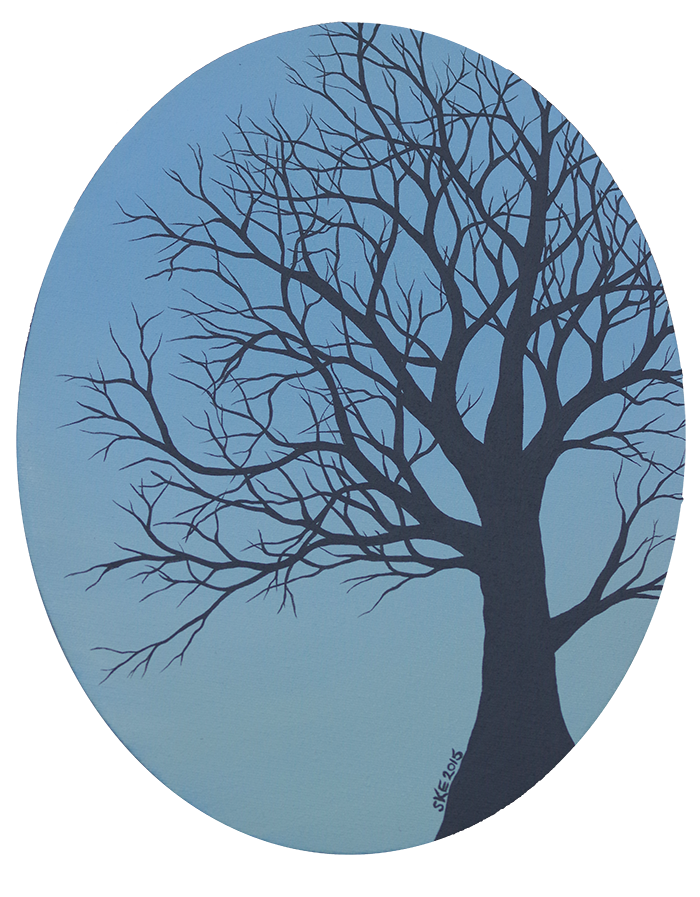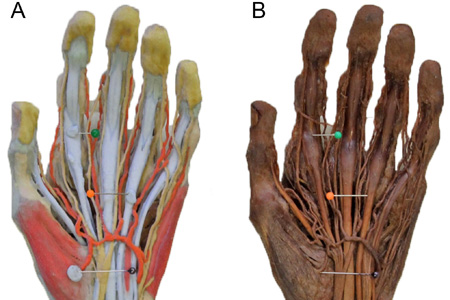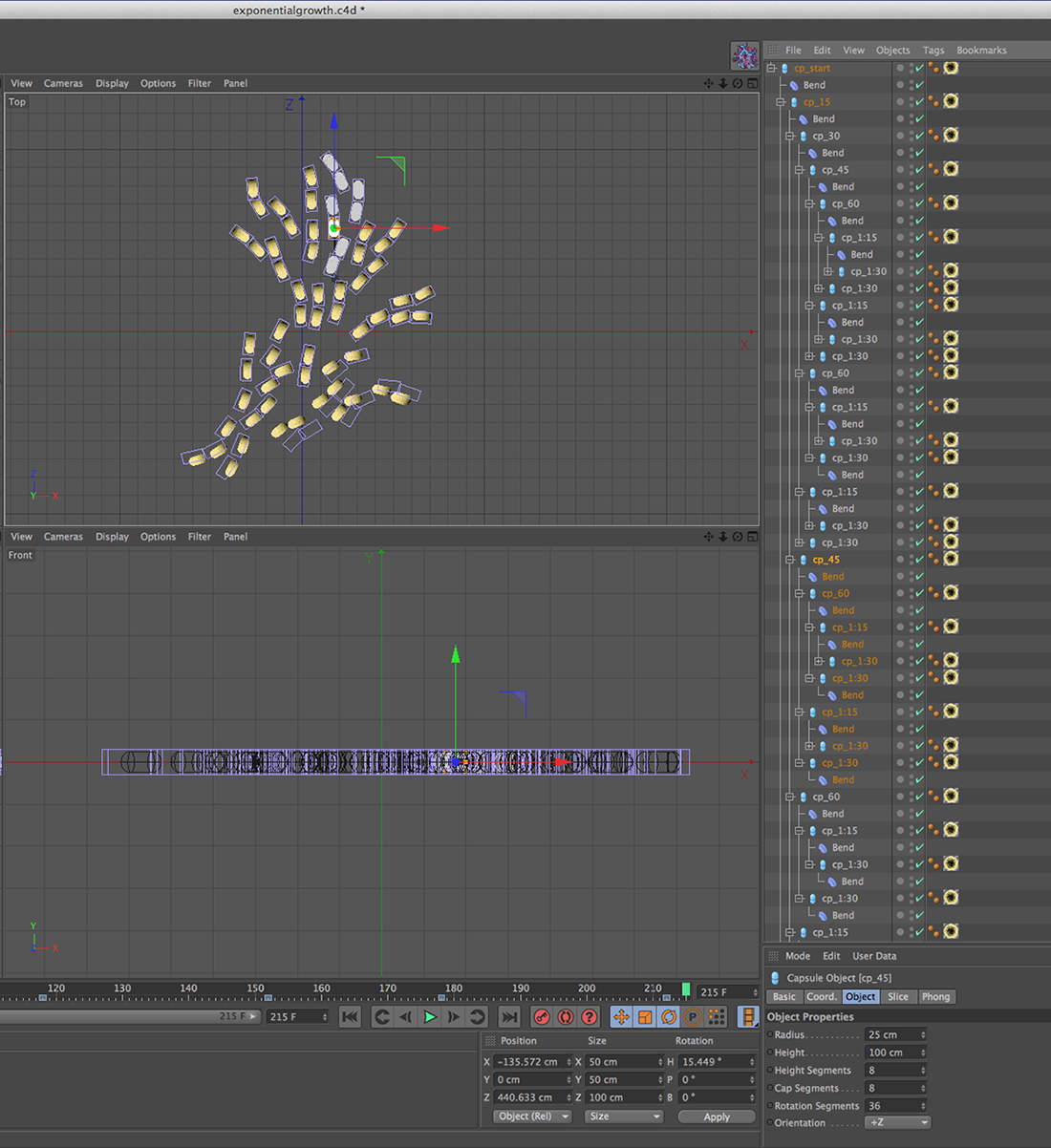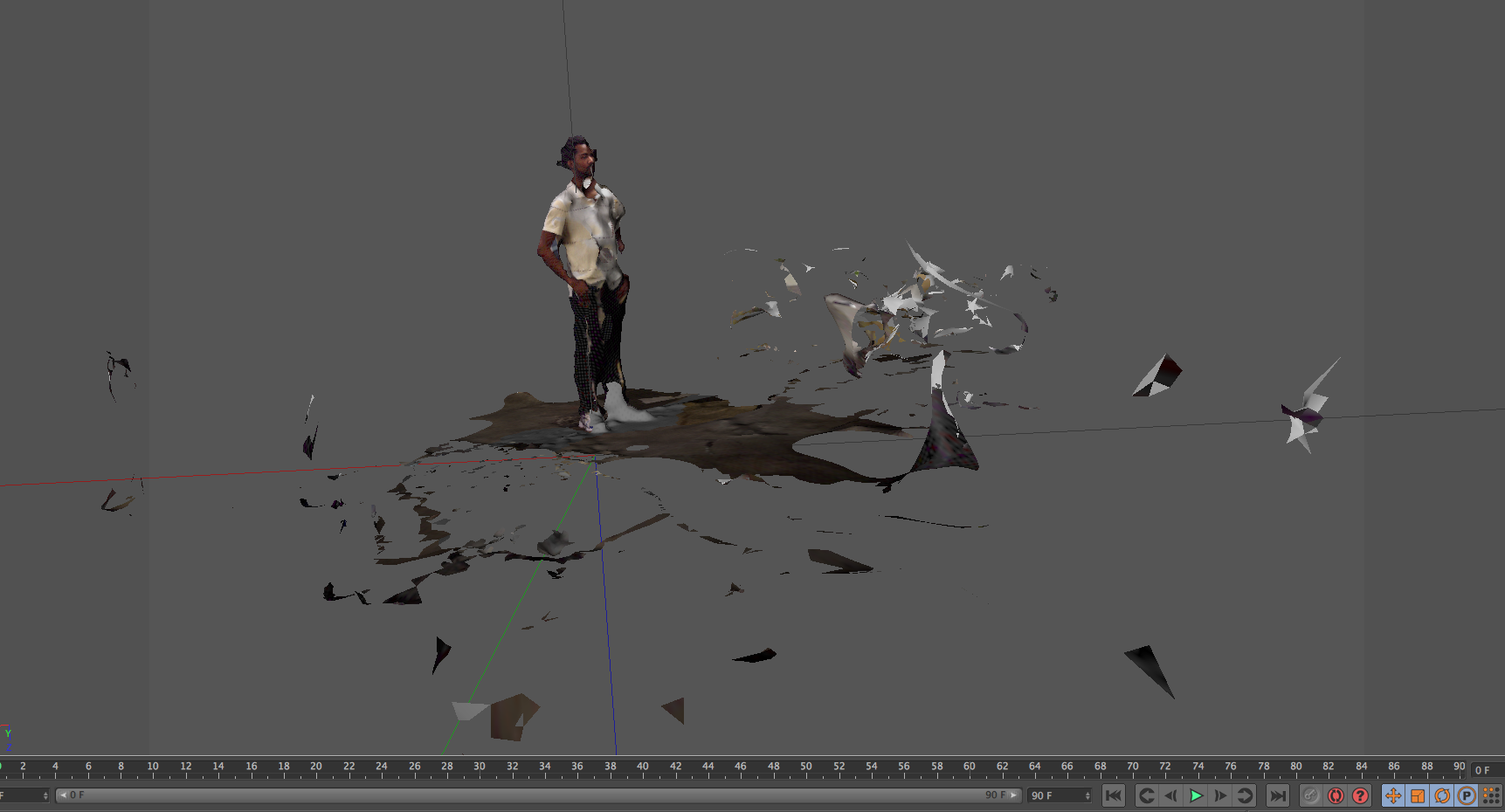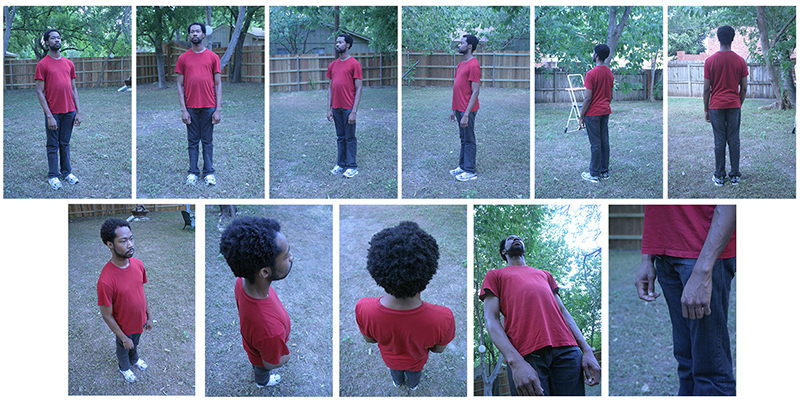Archive for the ‘3D’ tag
Molecule Rigging
Some of you reading are familiar with using the epmv plugin within Cinema 4D. Gary Welsh came up with a workflow for rigging those downloaded molecules to make them dynamic. I haven’t tried this one myself yet, but it looks really cool. I wanted the reference for myself, so I thought that I would share it with anyone else reading as well.
If you go to the YouTube page directly, you can even download the .c4d file directly.
The Moon’s Formation
Today I finally got the go ahead to share one of the astronomy animations of late. It looks like we may change something about the sun on the first one, but this one is staying as is. This was definitely the crazier of the two to work on so far. I don’t really ever get requests to crash things when I’m making bio animations. So I did a few tests in advance of taking this one on, where I discovered the Voroni Fracture, which is super fun, especially when combined with the push-apart and random effectors. Unfortunately, by the time we got the textures fully set and introduced a molten core, every scene that used Voroni fractures wound up taking forever to render. There are spots where I would have liked to do it a few more times to finesse some of that stray space debris and get it just so. But overall, I learned a lot working on this, and it was fun to try something different.
It’s been a while since I’ve been able to post anything fun from work on YouTube. For a while there, most of my animation work was either going into larger interactives and needed that context to make sense, or was really small, and again best within the context it was being made for.
I’m looking forward to doing more of these. And when we get things settled with that first one I’d like to show it off too. It’s less smash and more elegant. I think it’ll give viewers a good aha moment, and well, that’s my favorite part of working on things like this. Well, that and the part where the details of my job involve all kinds of cool scientific knowledge. Really, prior to making this, I don’t believe I’d ever heard this explanation for how our moon formed.
Oh, and I can’t forget to mention this awesome find for textures. I only used them a little in this animation, but I’ve gotten good use out of the textures that are freely available from Solar System Scope. It’s a lot like taking them directly from NASA, only these folks have already done the work of taking NASA’s telescope images and stitching them together to make a perfect texture for application to a sphere in whatever 3D program you might be using. It’s really made working on these kinds of images nice. So big thanks to them, and obviously to NASA.
3D Printable Periodic Table of the Elements
I’ve been working on a little side project lately at work. For a long time now, I’ve wanted to get into making 3D printable educational materials. Our focus on accessibility of late may allow me to do just that. Did you know that you can download a font for braille, just like any other font? So I’ve been playing around with a braille version of the periodic table of the elements. Obviously, this does no good in a web image, but when incorporated into a 3D printable file, suddenly useful.
I haven’t had the opportunity to test this with a printer yet, but I’m working toward that. Once I have that, I can make adjustments to the digital file and perfect it from there.
I think that if I can optimize this for use, and if schools actually download and print them, that this could be a great addition to our educational offerings. Really, I’m surprised that I don’t see more of this kind of tool around already. I really think that we will in the years to come.
DNA Cloning Animation
I recently had the pleasure of working on an animation to teach students about DNA cloning. This is one of those exciting ones where I feel like we really added to what’s out there on this topic. So naturally I wanted to share it here as well.
Update
Well, while things may not look any different, welcome to the newly hosted AnatomyAndArt.com! With Speedy Puppy closing it’s doors in a couple of months, I’ve been making the transition over to A Small Orange, a web hosting company run right here in Austin. So far, everything seems to be working. So yay!
A lot has happened since my last post here. Since my last post here, my mother was diagnosed with cancer. That’s been huge, and just a real crash course in cancer treatments, ER failings, ICU care, neurosurgery, and all of that. I suppose I haven’t really had it in me to write about all that.
I also gave that talk to the 8th graders for career day. And that was so worth doing, both for the reflection it gives you on one’s own path, but also for the connection you make with the up and coming generation. If anyone ever asks you to do this, I have to recommend going for it.
The holidays have also come and gone. I actually had a cute little Xmas card this year, created in 3D that I’d intended to share here. I suppose I could go ahead and do that now belatedly. Rocky and I do wish you all love and warmth for the holiday season, and future seasons as I’m not getting this up until January.
I also finished another painting. I think it has a buyer in California already. And I started another one too. So it’s been a very paint heavy beginning to the New Year. And then just last night I met up with some fellow artists in Austin and we discussed potentially building a show to take our work into a couple of cities. I’m loving the idea, and really hoping that it comes to fruition.
And so I suppose I’ll leave you with an image of the latest painting, and return with images on the one in progress as it gets further along. Introducing Tree #8
3D Printed Anatomy
Monash University in Australia is releasing their new 3D printed anatomy series. The press release is here… http://www.monash.edu.au/news/show/3d-printed-anatomy-to-mark-a-new-era-for-medical-training
And if you can access the full article, more details about it are published here…
http://onlinelibrary.wiley.com/doi/10.1002/ase.1475/abstract
And I first heard about it through Meddeviceonline’s article which contains the following photo. If that is an actual comparison of cadaver and the plastic version being made by Monash, well that’s really impressive…
http://www.meddeviceonline.com/doc/world-s-first-d-printed-cadaver-could-revolutionize-medical-education-0001
Most of these articles talk about the value of having these models as a replacement for human dissection all together in classes. I don’t think that a complete replacement will ever be a good idea, certainly not anytime soon. But a really accurate model like this, could be incredibly valuable used in addition to cadaver studies. Which leaves me wondering exactly how they’re getting it.
The abstract of the scholarly article mentions injecting contrast into specific anatomy to highlight it for the scans. That would certainly help, but I’ve seen enough CT data to know that it’s going to come out with a lot of mess too. Whoever is going through and isolating this piece from that and isolating the model is doing a fine job of it. That’s for sure.
I’ve had a bit of fascination for the last couple of years with the idea of making educational models that can be printed out in 3D on the user’s part. This is definitely more complicated than that, and they are not suggesting that students try to print their own. But I feel like that’s around the corner. And it’s exciting.
C4D Live Tutorials Airing Presently
I am a fool not to have mentioned it before, but the NAB is offering some great tutorials online right now. There is a fantastic one airing right this moment about mograph and dynamics in medical animation by Thomas Brown. Do check out http://www.c4dlive.com/ if you get a chance today, or through Thursday.
Showing Exponential Growth in Bacteria
So I got an interesting request from the math department at Sapling Learning about a week ago. We wanted to show the concept of exponential growth, using bacteria as the example. So one bacterium divides into two and they each divide into two and so on. We decided to take this through six generations landing us with 64 bacteria on screen by the end of it.
So the catch was, how to move 64 bacteria around as one, and then as two with an equal number of divisions nested inside and then as 4, each with an equal number of divisions inside, and then as 8 and so on. So I got a little complicated with my object hierarchy for this one.
So I had one called cp_start, short for clostridium perfringens (a bacterium capable of reproducing at the 15 minute generation cycle that we wanted for the example) with a bend object on it. And then nested within that one was a duplicate called cp_15, another called cp_30, cp_45, cp_60, cp_115, and cp130, to represent the ones that would branch divide off at the 15 minute, 30 minute, 45 minute, hour, hour 15, and hour thirty points from that one, all with their own bend objects. Then within each of those I had further duplicates that would still occur from each of those. Within cp_45 there was cp_60, cp_115, and cp_130, but cp_60 would only have cp_115 and cp_130. And then so on with each bacterium.
In the end it worked out, and the extra arranging effort was well worth it as the sprawl pattern of bacteria had to be adjusted after the first time. My first attempt had them all more compactly arranged, but one of our biology experts explained that bacteria could only continue a regular exponential growth cycle if they were able to get to more food. If I hadn’t had them nested like this, it would have been incredibly hard to go back and make them disperse further.
I added the timer and count in After Effects. The whole thing plays at a sped up pace, showing one minute per second of animation. And I think it looks good. I hope that we get to use it for biology content someday as well as for the math example now.
3D from 2D
My plan to get a full figure out of 123d Catch has so far fallen flat. My efforts seem to alternate between mostly outright failures sprinkled with unusable results.
I think that the best capture we got was in the office lunch room, using the iPad. As you can see, we still got a lot of scatter from the surrounding room. And it’s harder to see in this image, but you can tell that there was a tiny bit of movement that resulted in a little bit of distortion in my model, Ernest’s, face.
I think that the lunch room capture did better than the office capture near a window or the outside/ sidewalk capture because the light was flatter. I’ve noticed that the program seems to have trouble with both shadows and also bright highlights. Which is why we decided to try taking photos one more time at my place, with my Cannon 20D SLR camera, late in the day so that the light wouldn’t be more even. The below images are some of what was shot, to give you an idea how we were going about this. I went all around him, then got up on a step ladder and got shots all around from above. I made certain to get the top of his head, since we’d had trouble with that in a previous attempt. I got down low and shot upward to avoid any blank spots under the chin or hands. I took closer shots of the hands and legs and feet to prevent a previous effect I’d seen where the legs and floor between them had been treated as a continuous object.
I think that we had the right idea here, but I’ve since learned that the software relies a lot more on background overlap than I’d imagined. So while I was sure to get overlap in my shots of Ernest, I didn’t think about making sure that trees were identifiable in the background from one shot to the next, or that I include the kind of overlap on the house that would help the software align shots.
My error became clearer when I tried to crop all of my images down to just Ernest, thinking that it would focus the software on the intended subject, but my results only became worse for doing so, and as I read more about it found advice to the contrary. If I were to do this again, I would put clear identifying objects on the ground near my model to help the software key. And I certainly wouldn’t have let the ladder ever be in different locations for different shots in the background.
I would like to try this again sometime with better attention paid to my lens as well. While I wasn’t using a telephoto lens, I did have a moderate zoom lens on and I’m pretty sure I must have adjusted that between shots a little. I also wonder about how the depth of field affected my results. Sometimes there’s only so much you can do, especially shooting a tall lean figure like Ernest. But I’m sure that as broad a depth of field as possible would be better.
Ideally, I’d have something like 60 cameras set up all around to cover all angles and on different colored tripods to help the software key each shot as it makes it’s shape, all firing at exactly the same time. I could capture action shots with a set up like that, and skip the race against the setting sun entirely. But I still think there’s possibility to get somewhere with what I do have.
Anyway, I had to move on to another method of doing things for my work project, but my interest in figuring out this technology remains.
DNA Replication – 3D Animation
Hello again readers! I’m so happy to be able to finally share with you all an animation that I worked on some months back for Sapling Learning. Some of you will recall me writing about this one before.
The 3D models were created by studying the molecular sizes and shapes of the relevant molecules and then creating simplified representations. The 3D animation itself was created using Maxon’s Cinema 4D. Then the individual shots were composited together in Adobe’s After Effects. Audacity was used to record the narration, and then it was all put together for timing in Final Cut Pro (I still use an older version and cannot speak to all the changes they made in X.) I went back into After Effects for further labeling and effects (like the zoom into DNA polymerase) after that. So that’s the basic work flow.
There are a lot of biochemical processes that feel like a very complicated ballet as you get further into them. Putting together the action of everything happening at the same time for the final shot in this animation really got me thinking about that analogy again. And the truth is, that when this actually happens in nature, that lagging strand is actually being whipped around by helicase and read in an even more complicated fashion. I really like that we emphasized that we were simplifying for clarity with this one. A lot of educational materials would just let students find that out later if they went on to the next step in their studies. That kind of thing always bothered me when I learned about such processes in school, and I’m happy to be with content experts who are willing to take the time to either make something more accurate, or let students know when things are being brushed over or left out of the picture for clarity. I think that kind of thing is important.
Anyway, I’m really happy to be able to share this with you all.


